6 Practical Foot Care Tips for African Diabetics
By: Rukhsar Jabbar. M.Sc. Physiotherapy. Freelance Health Writer and Datelinehealth Africa (DLHA) volunteer. Medical review and editorial support provided by the DLHA Team.
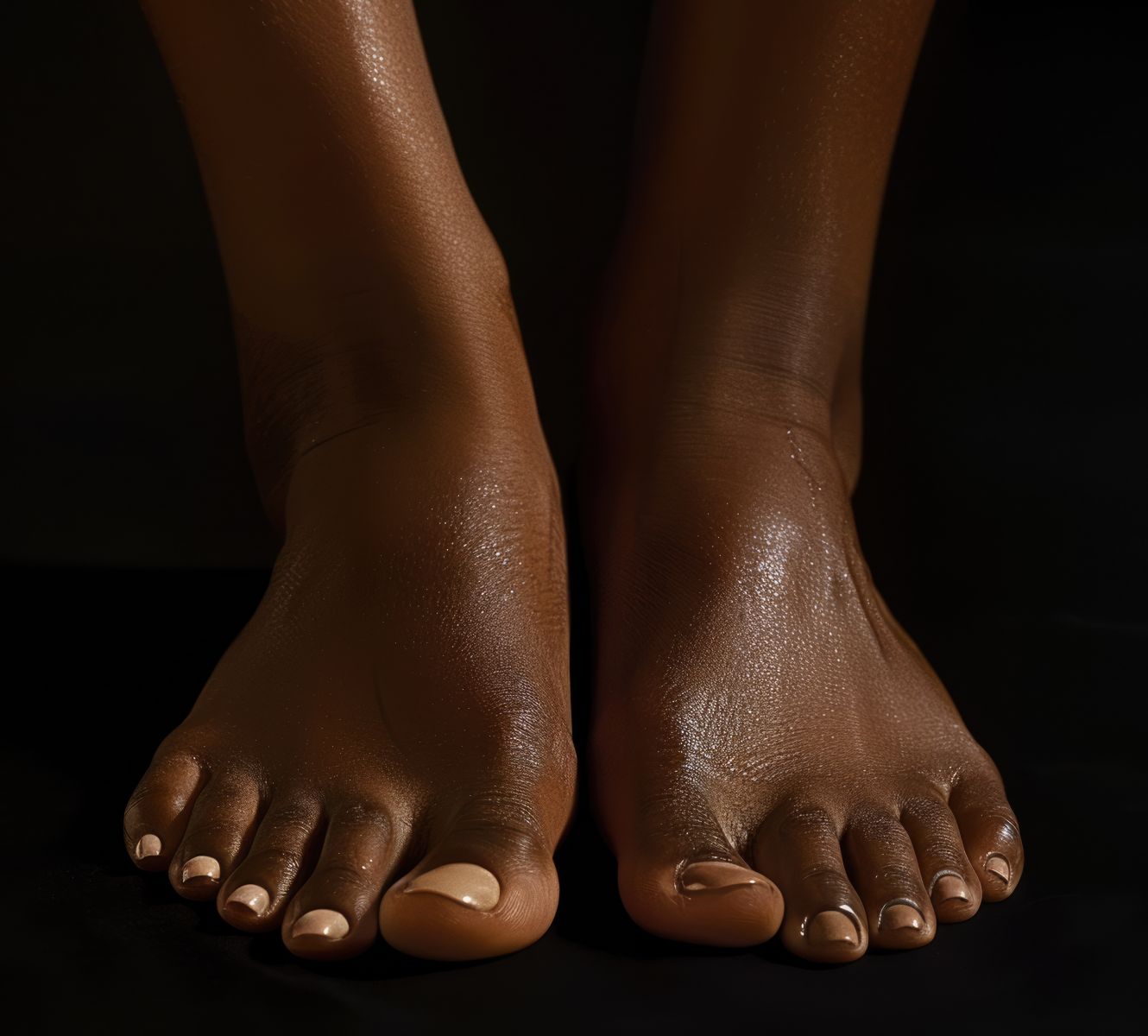
Close up of the feet of a black woman following pedicure. Credit: Freepik.
If you have diabetes, you likely know the importance of taking care of your feet. But are you aware why foot care is necessary and how to engage in effective self-care of your feet?
Well, here is why! In diabetes, blood flow to the feet can decrease and nerve damage can occur. Both conditions can lead to an increased risk of foot ulcers, infections, or amputations in severe cases. These complications of diabetes can impact the quality of life.
These concerns are especially relevant in Africa, where diabetes is on the rise and accessing healthcare resources can be challenging. The good news is that many foot care concerns in diabetics that occur due to nerve damage and reduced blood flow [1] can be prevented with consistent and effective foot care.
This blog will guide you with practical tips for keeping your feet healthy. It will also educate you about how to inspect your feet, moisturise your skin, cut your nails and choose suitable footwear.
Read on to be informed and take that first step toward healthier feet and a better quality of life!
A diabetic is a person, regardless of race, gender, and nationality, whose body fails to control blood sugar levels adequately, either because it doesn't produce enough insulin (type 1 diabetes) or because it can't effectively use the insulin it produces (type 2 diabetes).
Insulin is a hormone that helps to get blood glucose (sugar) obtained from food into cells of the body for storage as well as for for energy. When this process is disrupted, blood sugar levels can become too high, leading to diabetes and various health problems.
Diabetes damages your body's blood vessels and nerves, particularly in your feet. It increases the risk of infections and injury. These may develop into major problems if left untreated.
By prioritising foot care, African diabetics can minimise their risks and maintain their mobility and quality of life. Here are some practical tips to know and use for good foot care.

A close-up view of a healthcare professional wearing white gloves examining the sole of an African adult's foot, highlighting skin texture and natural lines. Image is AI generated using ChatGPT.
According to the International Working Group on the Diabetic Foot, you should inspect your feet at least once a day.
Even though your feet aren't hurting, you can have foot issues. You may identify issues early and prevent them from getting worse by checking your feet every day. Checking your feet every night when you take off your shoes is a smart method to keep in mind.
Ask someone else to examine your feet if you have problems bending over to see them. You can also try looking at your feet in a mirror.
Here are things to do when you inspect your feet [2, 3]
2. Maintain Proper Hygiene and Moisturise Regularly
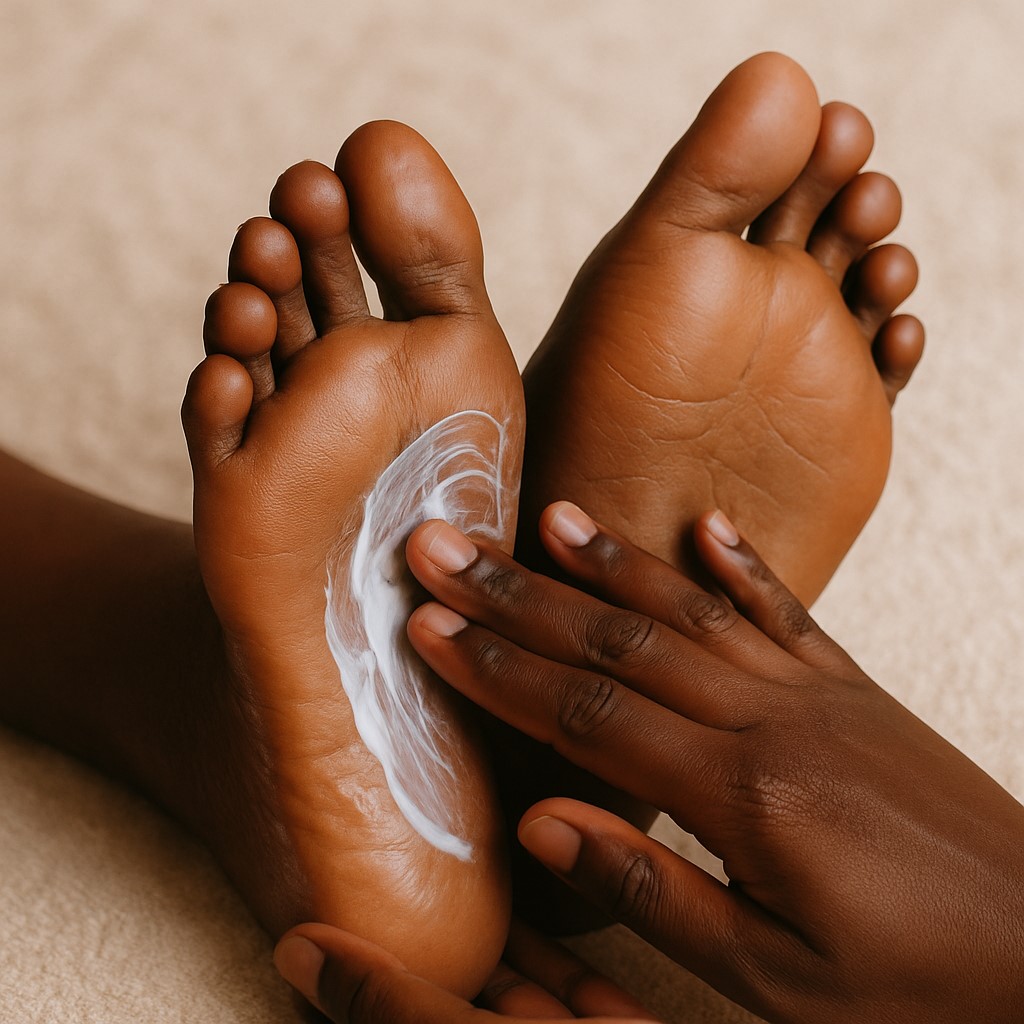
A close-up of dark brown hands applying white moisturising cream to the sole of an African person's foot, resting on a soft beige towel. Image is AI generated using Chatgpt.
To avoid issues, diabetics need to take extra care of their feet. You should keep your feet clean without removing their natural oils. After washing and drying your feet and in-between the toes, moisturise the tops and bottoms of your feet. Use a mild moisturiser suitable for people with diabetes to maintain moisturised and soft skin. Don't use lotion in the space between your toes because too much moisture there can encourage the growth of diseases. [4]
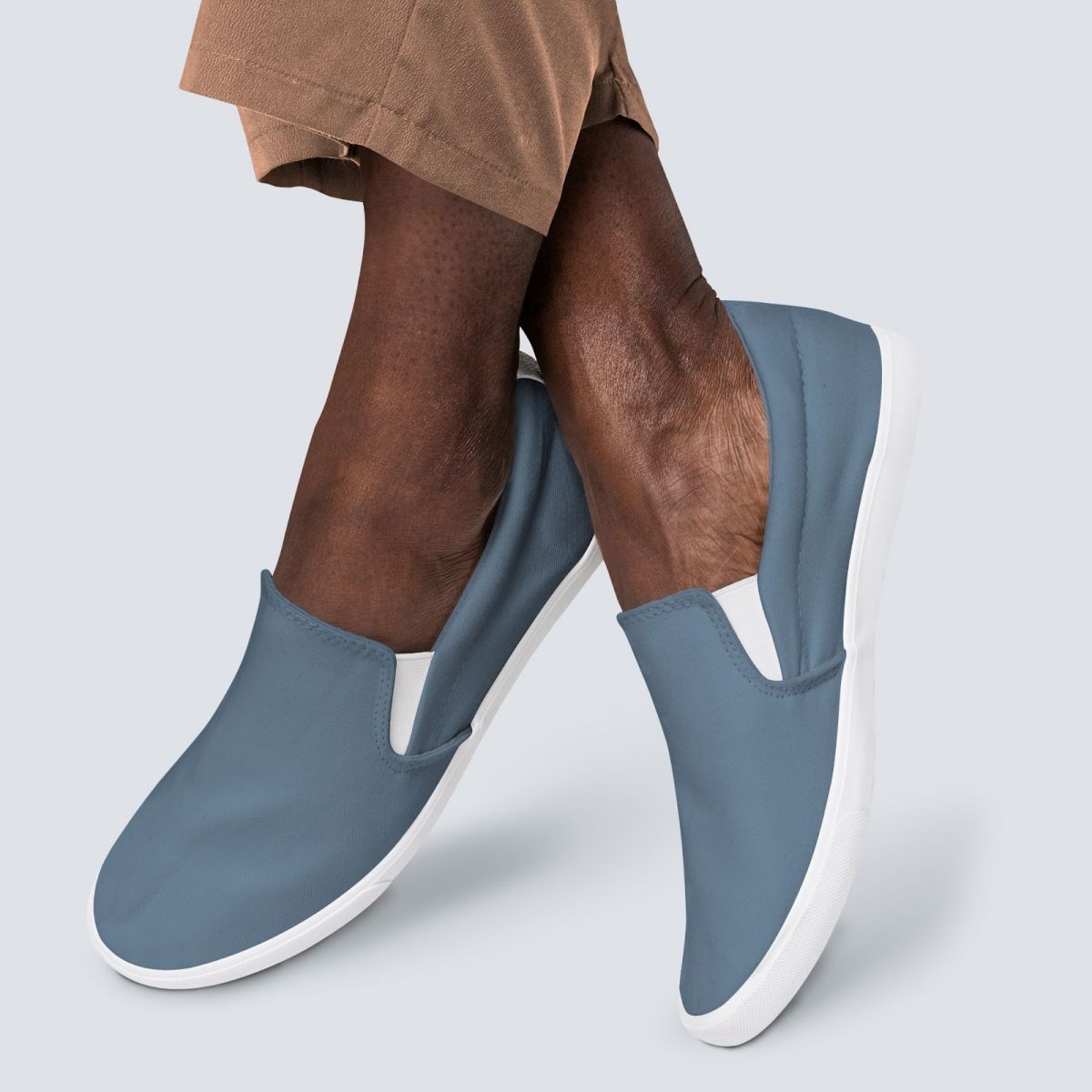
Close up image of the lower extremity of a black man wearing comfortable blue-coloured loafer shoes. Credit Freepik.
Be aware that wearing comfortable footwear is very important for you as a diabetic. Although wearing stockings or socks with shoes may feel uncomfortable in the hot and sometimes humid weather that occurs in many African countries, doing so will help prevent blisters and sores. Make sure your socks fit properly and are clean and gently cushioned. Seamless socks are ideal.
Put on footwear that fits properly and shields your feet. The following advice will help you choose the appropriate style of shoes:
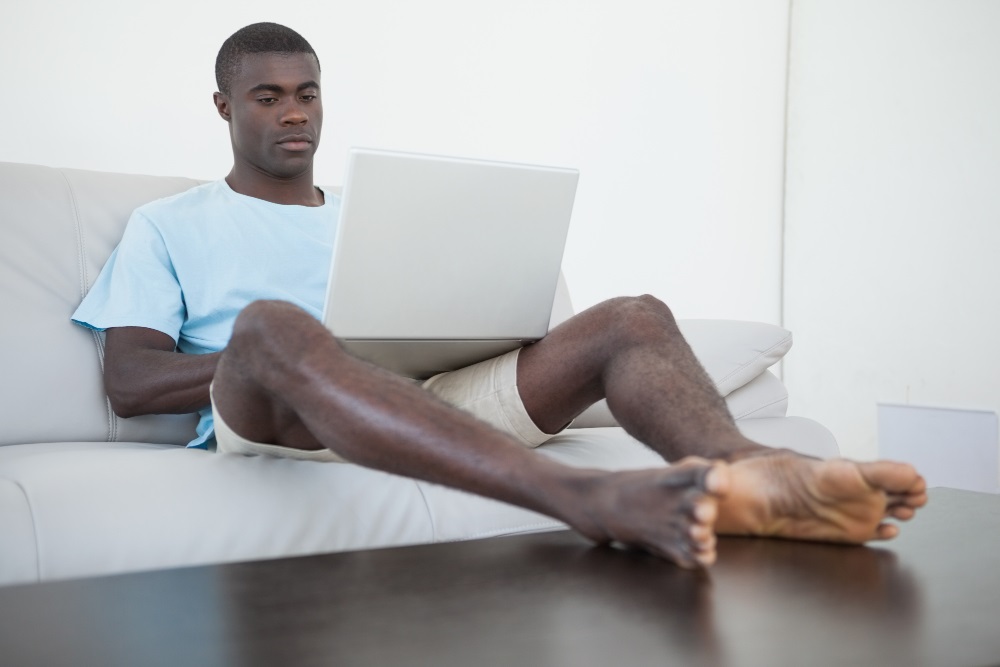
A young black man seated on a sofa with a laptop computer on his lap, and feet up on a centre table in front of him. Image credit: Freepik.
Diabetic nerve damage might cause you to burn your feet without even recognising it. Wear socks while sleeping to avoid cold feet. When outdoors during the winter months in certain regions of Africa, wear lining-equipped waterproof boots to keep your feet comfortable, warm and dry. Keep the blood flowing to your feet. You can use the following tips to improve blood flow to your feet: [3]
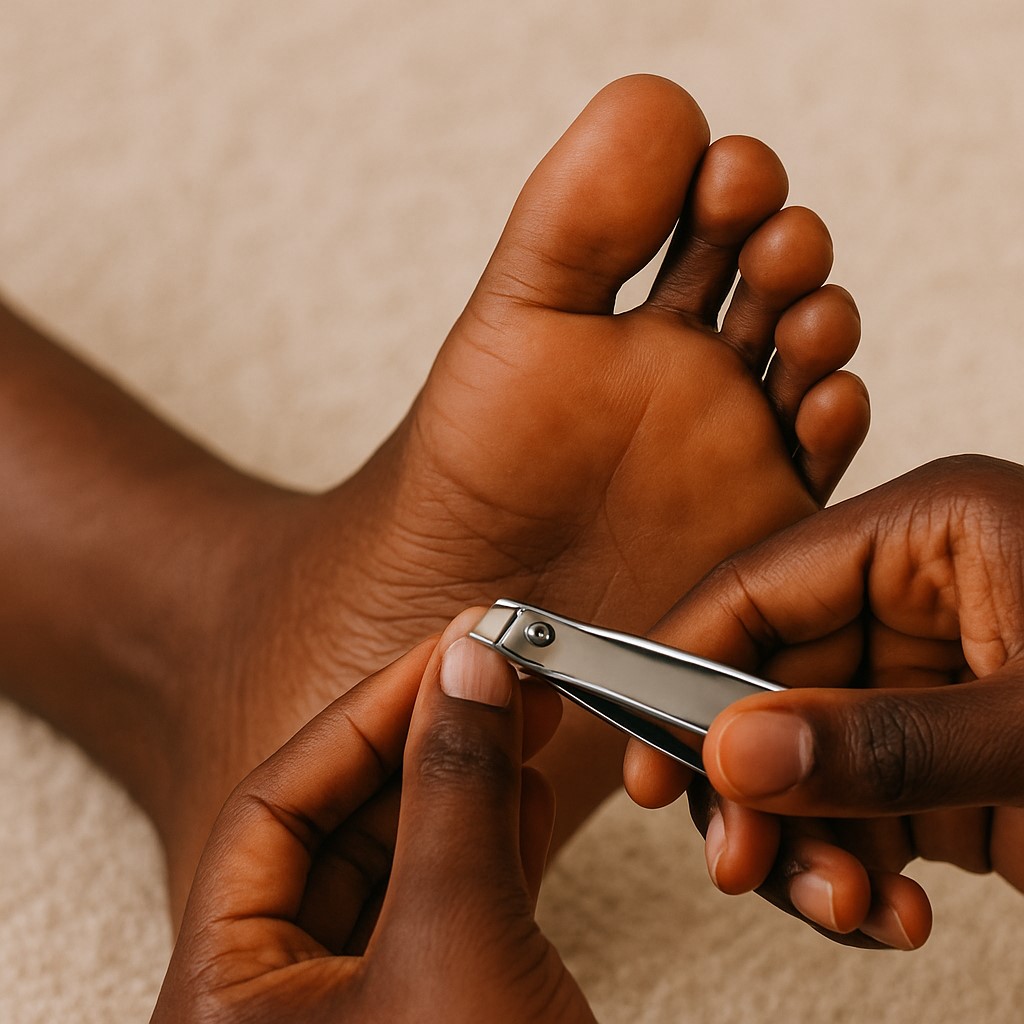
A close-up of dark brown hands using a silver nail clipper to trim the toenails of an African client whose foot is resting on a soft beige surface. AI generated using Chatgpt.
Nail abnormalities are fairly common among diabetic patients, particularly those with chronic and poorly controlled diabetes. This is due to the fact that patients frequently disregard their nails. [5]
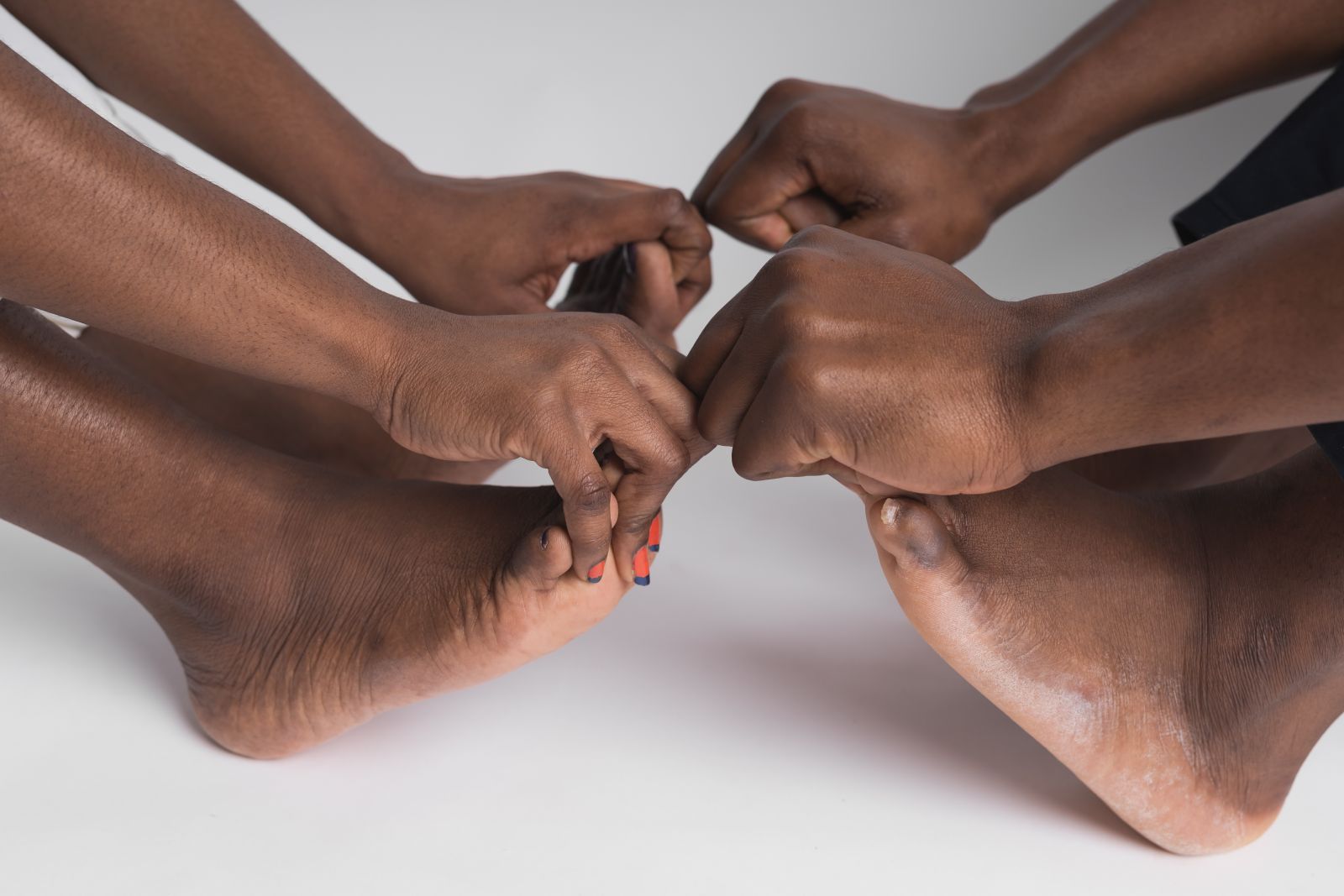
Close up mages of hands grabbing the toes on flexed feet of two individuals that are sitting opposite each other Credit: Freepik.
You should check for signs that need attention and address them promptly to avoid complications. Never disregard notable changes in appearance or chronic foot pain, as these could be signs of more serious issues.
Keep an eye out for symptoms including:
These warning indicators might point to underlying problems that need immediate medical care. Consult a healthcare provider right away if you encounter any of these symptoms, since early management can guarantee better results and prevent problems.
The following challenges and more contribute to poor foot care outcomes in low income countries like many in Africa.
To tackle these challenges, it is necessary for governments, public health and healthcare managers to undertake as applicable to each:
The key to avoiding diabetes complications, including problems with the feet, is blood sugar control. So, monitor your blood sugar regularly and ensure that you keep it under control by taking your medications as prescribed, adopting a healthy lifestyle that includes frequent exercise and a balanced diet. Lastly, keep your regular appointments with your healthcare provider. Remember, prevention of diabetic foot is better than its treatment and its potential complications.
Diabetic foot problems can be avoidable with the right care and education. African diabetics can safeguard their feet and enhance their general quality of life by adhering to these six useful foot care guidelines: daily examination, good sanitation, suitable footwear, keeping feet warm, meticulous nail care, and addressing problems early.
In many African communities, access to foot care may be limited, yet even little daily actions at home can have a significant impact. Prioritising education, prevention, and early intervention requires collaboration between patients, families, and healthcare professionals. Never forget that your feet are your lifeline; if you take good care of them, they will take good care of you.
You should begin implementing these guidelines right away if you or someone you know has diabetes. Talk to your doctor about maintaining the health of your feet and distribute this information around your neighbourhood. You can live a longer, healthier life by taking early action to avoid problems later on.
References
1. Abbas ZG, Archibald LK. Challenges for management of the diabetic foot in Africa: doing more with less. Int Wound J 2007 Oct 24 4(4):305–13. Available from here
2. Sertsu A, Nigussie K, Lami M, Bekele Dechasa D, Abdisa L, Eyeberu A, et al. Adherence to diabetic foot care recommendations and associated factors among people with diabetes in Eastern Ethiopia: a multicentre cross-sectional study. BMJ Open 2023 Oct 4,13(10):e074360. Available from here.
3. National Institute of Diabetes and Digestive and Kidney Diseases [Internet]. [Cited 2024 Dec 14]. Diabetes & foot problems Available from here.
4. Hirpha N, Tatiparthi R, Mulugeta T. Diabetic foot self-care practices among adult diabetic patients: a descriptive cross-sectional study. Diabetes Metab Syndr Obes 2020 Dec 4,13:4779–86. Available from here.
5. Vidyasagar P, Kumar BP. Toe nail changes in diabetes mellitus. IP Indian Journal of Clinical and Experimental Dermatology [Internet]. [cited 2024 Dec 14];7(1):40–6. Available from here.
Published: July 8, 2024
© 2025. Datelinehealth Africa Inc. All rights reserved.
Permission is given to copy, use and share content for non-commercial purposes without alteration or modification and subject to source attribution..
DATELINEHEALTH AFRICA INC., is a digital publisher for informational and educational purposes and does not offer personal medical care and advice. If you have a medical problem needing routine or emergency attention, call your doctor or local emergency services immediately, or visit the nearest emergency room or the nearest hospital. You should consult your professional healthcare provider before starting any nutrition, diet, exercise, fitness, medical or wellness program mentioned or referenced in the DatelinehealthAfrica website. Click here for more disclaimer notice.